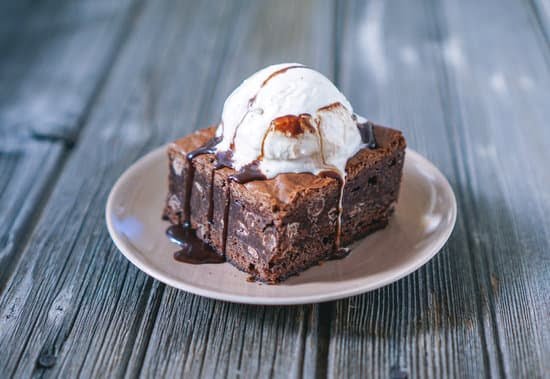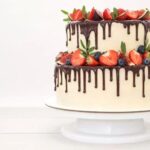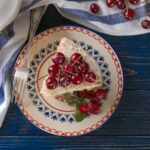Have you ever wondered how to decorate a cake with frosting to create beautiful designs and elegant finishes? Frosting is an essential part of cake decorating, adding flavor, texture, and visual appeal to your baked creations. In this article, we will explore the importance of frosting in cake decorating and provide valuable tips and techniques for creating stunning frosted masterpieces.
Frosting is not just a tasty addition to a cake – it also serves as an integral part of the overall design. It can be used to cover imperfections, create intricate patterns, and add layers of color and flavor. Understanding the different types of frosting, preparation techniques, tools needed, and advanced decorating techniques will help you elevate your cake decorating skills and impress your friends and family with professional-looking creations.
In the following sections, we will delve into the different types of frosting, such as buttercream, cream cheese, fondant, and ganache. We will also discuss essential steps for preparing the cake before frosting, various frosting techniques including spreading and piping, necessary tools like spatulas and piping bags, options for adding color and flavor to your frostings, advanced decoration techniques like ombré and marbling, troubleshooting common frosting mistakes that may arise during the decorating process.
Whether you’re a novice or experienced baker looking to improve your skills in cake decorating with frosting, this article has got you covered.
Types of Frosting
Frosting is a crucial component of cake decorating, as it not only adds flavor but also serves as a medium for artistic expression. There are several types of frosting that can be used to decorate cakes, each with its own unique texture and flavor profile. The most common types of frosting include buttercream, cream cheese, fondant, and ganache.
Buttercream frosting is a classic choice that is creamy and sweet, making it versatile for various decorating techniques. Cream cheese frosting offers a tangy and rich flavor that pairs well with carrot or red velvet cakes. Fondant is a smooth and pliable icing that can be rolled out to create a flawless finish on cakes, while ganache is a rich and glossy chocolate frosting that is perfect for decadent desserts.
When considering how to decorate a cake with frosting, it’s important to choose the right type of frosting based on the desired flavor and texture. Each type of frosting requires different preparation methods and has its own unique application techniques. Whether you’re looking to achieve intricate designs with buttercream or create a sleek finish with fondant, understanding the characteristics of each type of frosting will greatly contribute to the success of your cake decorating endeavors.
Mastering the art of cake decorating involves not only understanding the different types of frostings but also knowing how to apply them effectively. By learning about the characteristics and applications of buttercream, cream cheese, fondant, and ganache frostings, you’ll be well-equipped to create stunning cakes that are not only visually appealing but also delicious.
Preparing the Cake
When it comes to decorating a cake with frosting, the first step is to ensure that you have a perfectly baked cake as your canvas. Start by preheating your oven to the recommended temperature and preparing your cake pans by greasing and flouring them to prevent sticking. It’s important to mix your batter thoroughly, but not overmix, in order to achieve a light and fluffy texture.
Once your cake is baked to perfection, it’s essential to let it cool completely before attempting to frost it. Most bakers recommend allowing the cake to cool in the pan for about 10 minutes before transferring it to a wire rack. After transferring, make sure that the cake is cooled entirely before attempting any frosting techniques – a warm cake can cause the frosting to melt and slide off.
Before you begin decorating, it’s crucial to level your cake layers if they have domed or uneven tops. A simple way to do this is by using a long serrated knife or a cake leveler tool. Carefully trim off any uneven parts of the top of the cake until it is completely flat. This step will ensure that your final product has an even and professional appearance when you apply the frosting.
By understanding these baking, leveling, and cooling techniques, you can set yourself up for success when it comes time to decorate your cake with frosting. Mastering these foundational steps will provide you with a smooth and sturdy base on which you can showcase your frosting skills.
Frosting Techniques
Spreading Frosting
When it comes to frosting a cake, spreading is one of the most basic techniques. To achieve a smooth finish, start with a crumb coat by applying a thin layer of frosting to seal in any crumbs. Once the crumb coat has set, add a thicker layer of frosting and use a spatula to spread it evenly over the cake. For best results, turn the cake as you spread the frosting to ensure even coverage.
Piping Decorations
Piping is a versatile technique that allows for intricate and decorative designs on cakes. To pipe frosting, fill a piping bag fitted with desired tips (such as star, round, or petal tips) and twist the end of the bag to secure the frosting inside.
Hold the bag at a 90-degree angle to the surface of the cake and apply even pressure to create your desired design. From borders and swirls to flowers and intricate patterns, piping can add an elegant touch to any cake.
Decorating Tips
When it comes to decorating with frosting, there are countless tips and tricks that can take your cake from amateur to professional-looking. For smooth finishes, dip an offset spatula in hot water before smoothing out the frosting. To add texture and dimension, experiment with different tools such as combs or stencils. Additionally, don’t be afraid to get creative with colors and flavors – from ombré effects using varying shades of frosting to marbling techniques for a whimsical look.
By mastering these frosting techniques-spreading, piping, and decorating-you’ll be well on your way to creating stunning edible works of art.
Tools Needed
When it comes to decorating a cake with frosting, having the right tools is essential for achieving professional-looking results. Spatulas are a must-have tool for spreading frosting evenly across the surface of the cake and creating smooth finishes. Piping bags and tips allow for intricate designs and decorations, while offset spatulas make it easier to reach difficult areas on the cake.
Spatulas come in various sizes and shapes, including straight and angled versions, each serving different purposes when it comes to frosting a cake. Straight spatulas are great for spreading frosting on flat surfaces, while angled spatulas make it easier to reach the sides of the cake. Make sure to have different sizes on hand to accommodate cakes of varying sizes.
Piping bags can be filled with frosting and fitted with different tips to create decorative elements such as flowers, borders, written messages, and more. When using piping bags, be sure to learn how to properly hold and squeeze them to achieve controlled and precise designs. As for offset spatulas, they are incredibly useful for smoothing out frosting on the top and sides of the cake without creating an excess of crumbs in the process.
| Tool | Function |
|---|---|
| Spatulas | Spreading frosting evenly |
| Piping Bags | Creating decorative elements |
| Tips | Allowing for intricate designs |
| Offset Spatulas | Smoothing out frosting on top and sides of cake |
Color and Flavor
Adding color and flavor to frosting can really take your cake decorating to the next level. Whether you want a vibrant rainbow cake or a subtly flavored frosting, there are a few key techniques to keep in mind when adding these elements to your frosting. Here are some tips on how to add food coloring and extracts to your frosting:
- Choose the Right Food Coloring: Gel-based food coloring is preferred over liquid food coloring as it is more concentrated and will not affect the consistency of the frosting.
- Gradually Add Color: It’s easier to add more color than it is to fix overly colored frosting, so start with a small amount of food coloring and slowly add more until you achieve the desired hue.
- Flavoring with Extracts: Whether you want a classic vanilla or something more unique like almond or citrus, extracts can add depth of flavor to your frosting. Add them in small increments and taste as you go to avoid overpowering the frosting.
When it comes to adding color and flavor, remember that less is often more. It’s always easier to add additional color or extract than it is to fix an overly saturated or flavored batch of frosting. Take your time, experiment with different combinations, and have fun creating a visually stunning and delicious masterpiece.
- Remember that certain colors may require more food coloring than others. For example, achieving a true red or black may require quite a bit of gel-based food coloring.
- If you’re working with multiple layers or tiers of cake, try coordinating the colors and flavors of the frostings for a cohesive look and taste throughout the entire cake.
- Consider using natural food dyes and flavorings for a healthier alternative without sacrificing vibrancy or taste.
Advanced Techniques
Adding advanced techniques to your cake decorating skills can take your creations to the next level. Ombré, marbling, and textured frosting are all great ways to add visual interest and unique design elements to your cakes. Here’s how to achieve these advanced frosting techniques:
Ombré Frosting
To create an ombré effect with frosting, start by preparing a batch of buttercream or cream cheese frosting. Divide the frosting into separate bowls and add food coloring to each bowl in varying concentrations to create different shades of the same color.
For example, you might start with a deep shade at the bottom of the cake and gradually lighten it as you move towards the top. Using an offset spatula, blend each layer of frosting into the next for a seamless transition.
Marbled Frosting
Marbled frosting creates a stunning visual effect that resembles swirling patterns found in marble stone. To achieve this look, prepare two or more different colored frostings and place them side by side on top of your cake. Then, use a spatula or toothpick to gently swirl the colors together in a random pattern, being careful not to overmix so that distinct streaks of color remain visible throughout.
Textured Frosting
Textured frosting adds depth and dimension to your cake decorations. You can achieve this look by using specialized piping tips or tools such as combs or scrapers. These tools allow you to create various textures such as ruffles, waves, or basketweave patterns on the surface of your frosted cake.
With practice and patience, you can master these advanced frosting techniques and elevate your cake decorating skills to new heights. Experiment with different color combinations and designs to create one-of-a-kind edible works of art for any occasion.
Troubleshooting
Decorating a cake with frosting can be a fun and creative process, but it’s not without its challenges. Even experienced bakers can run into issues when working with frosting. Whether you’re using buttercream, cream cheese, fondant, or ganache, there are common mistakes that can occur. Knowing how to troubleshoot these issues can help you salvage your cake decorating project and achieve the desired result.
One common frosting mistake is when the frosting becomes too runny or thin. This can happen if the temperature in the kitchen is too warm or if too much liquid is added to the frosting. To fix this issue, you can try adding more confectioners’ sugar to thicken the frosting. Alternatively, chilling the frosting in the refrigerator for a short period of time can also help it firm up.
Another common problem when decorating a cake with frosting is air bubbles in the frosting when piping. These air bubbles can create an uneven texture and disrupt the smooth finish of the frosting. To prevent this issue, make sure to properly mix and prepare your frosting before piping. If air bubbles do form, gently tap the piping bag on a flat surface to release them before continuing with your decorating.
Lastly, sometimes frosting can become too stiff and difficult to work with, especially when attempting intricate decorations such as flowers or lettering. If this happens, try adding small amounts of milk or cream to soften the frosting until it reaches a more pliable consistency.
Overall, knowing how to troubleshoot common frosting mistakes will help you navigate any challenges that arise during the cake decorating process.
| Common Mistake | Troubleshooting Solution |
|---|---|
| Runny or Thin Frosting | Add more confectioners’ sugar or chill in the refrigerator |
| Air Bubbles in Piped Frosting | Gently tap piping bag on flat surface to release air bubbles |
| Stiff Frosting | Add small amounts of milk or cream to soften |
Conclusion
In conclusion, learning how to decorate a cake with frosting is a valuable skill that can greatly enhance the presentation and flavor of any homemade cake. Whether you’re using buttercream, cream cheese, fondant, or ganache, the right frosting can take your cake to the next level. By mastering techniques such as spreading, piping, and decorating tips, you can create stunning designs that will impress your friends and family.
When it comes to showcasing the finished masterpiece, make sure to take good quality photographs that capture the intricate details of your work. Share your creations on social media or in baking communities to receive feedback and inspiration from other enthusiasts. Additionally, don’t be afraid to experiment with different colors and flavors by adding food coloring and extracts to your frosting. Advanced techniques like ombré, marbling, and textured frosting can add an extra layer of sophistication to your cakes.
As with any new skill, practice makes perfect when it comes to decorating cakes with frosting. Don’t get discouraged if your first few attempts don’t turn out exactly as planned-troubleshooting common frosting mistakes is all part of the learning process. With time and patience, you’ll soon be creating professional-looking cakes that taste as good as they look. So grab your spatula, piping bags, tips, and offset spatulas and start experimenting with different frosting designs today.
Frequently Asked Questions
How to Easily Decorate a Cake?
Decorating a cake can be made easy by using simple techniques such as piping, using edible decorations like fresh fruit or flowers, and employing stencils to create unique designs. You can also use pre-made frosting in different colors for a quick and easy decoration.
What Is the Proper Way to Handle Frosting When Decorating a Cake?
The proper way to handle frosting when decorating a cake is to ensure that the frosting is at the right consistency – not too stiff or too runny. Use a palette knife or offset spatula to apply an even layer of frosting on the cake and then use a piping bag for more intricate designs.
How Do You Make Icing Look Pretty on a Cake?
To make icing look pretty on a cake, you can start by ensuring that the frosting is smooth and free from air bubbles before applying it to the cake. Use a variety of piping tips to create different designs, and consider adding edible embellishments like sprinkles or edible glitter to make the icing look more visually appealing.

Welcome to our cake decorating blog! My name is Destiny Flores, and I am the proud owner of a cake decorating business named Cake Karma. Our mission is to provide delicious, beautiful cakes for all occasions. We specialize in creating custom cakes that are tailored specifically to each customer’s individual needs and tastes.





